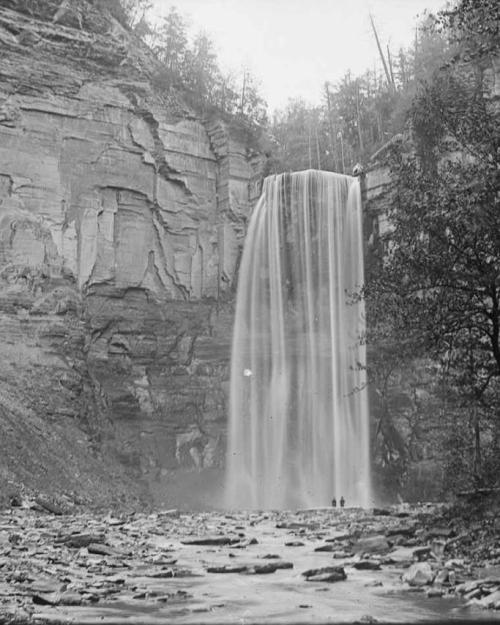Who lived high above Cayuga’s waters before the lake was so named – or rather, misnamed?
Many common labels for this region’s Indigenous people and places, including “Cayuga,” are actually mispronunciations imposed by white settlers, according to anthropologist and archaeologist Kurt Jordan ’88.
“Indigenous history is 98% of the human occupation of this region,” said Jordan, associate professor of anthropology in the College of Arts and Sciences and director of the American Indian and Indigenous Studies Program (AIISP) in the College of Agriculture and Life Sciences. “I want to show the ongoing connection of Gayogo̱hó꞉nǫɁ people to this region.”
For years, Jordan has given lectures to clarify layers of local history and to illuminate the presence of today’s Indigenous community. When the Tompkins County Historical Commission needed a book on the topic for its series on county history, Jordan wrote up what he’s discovered.
His new 80-page book, “Gayogo̱hó꞉nǫɁ People in the Cayuga Lake Region: A Brief History,” covers the Indigenous presence in the region from the last Ice Age 13,000 years ago to events that took place in August 2021. The book is for sale at the Tompkins County Center for History and Culture in downtown Ithaca and is also available online.
“We are thrilled to be able to help distribute the book, as it helps fill a critical gap in our local history literature and responds to the needs of our community,” said Ben Sandberg, a member of the Tompkins County Historical Commission and director of the History Center in Tompkins County.
Gayogo̱hó꞉nǫɁ translates roughly to “from the swampy land,” which refers to the north and south ends of Cayuga Lake before American settlers transformed the environment, Jordan said.
He consulted with members of the Gayogo̱hó꞉nǫɁ’ community and references their oral histories in the book, learning the Gayogo̱hó꞉nǫɁ’ perspective on historical and current events. He said Gayogo̱hó꞉nǫɁ partners emphasized the importance of introducing the Gayogo̱hó꞉nǫɁ words for places, leadership offices and the six nations in the Hodinǫ̱hsǫ́:nih Confederacy.
Jessica Martin, who teaches Gayogo̱hó꞉nǫɁ language classes in Cornell’s Linguistics Department and the American Indian and Indigenous Studies Program (AIISP), confirmed some words for Jordan and inquired among Six Nations community members about others.
“I would like our Gayogo̱hó꞉nǫɁ and Hodinǫ̱hsǫ́:nih communities to read this because I found it very insightful in understanding the migration patterns and historical sites of where our people lived,” Martin said. “It helps us connect – or reconnect – to our ancestral homelands.”
Martin used a draft of the book in her fall 2021 Cayuga language and culture course.
Jordan’s history begins as far back as human inhabitation, tracing “definite evidence of human presence” back to at least 11,000 BCE, when caribou were likely to have been the main source of subsistence in a tundra ecosystem similar to northern Canada’s today.
Artifacts possibly dating to that period provide one of many examples of settler mismanagement of Indigenous heritage, Jordan wrote. Two projectile points allegedly found in or around Ithaca were inadequately documented and subsequently lost in the 1950s. Surviving photos of the objects suggest they date as far back as 11,000 BCE.
“It would have been incredibly important to know exactly where these very early artifacts were found, whether they were found together, and what sorts of raw materials they were made of,” Jordan wrote. “But we will never know.”
Describing interactions with European settlers, Jordan’s history resists a simple conquest narrative. Evidence indicates that the Gayogo̱hó꞉nǫɁ evaded settler attention for a long time, preserving their self-determination, he wrote. There is also evidence of peaceful cohabitation in some places with American newcomers.
During the American Revolution, American military leadership perceived Hodinǫ̱hsǫ́:nih confederation nations as enemies, suspecting them of collusion with the British.
“From June through October 1779, an expedition led by Major General John Sullivan (with Brigadier General James Clinton acting as second in command) led a scorched-earth campaign against the Onöndowa'ga:' (Senecas) and Gayogo̱hó꞉nǫɁ,” Jordan wrote, adding that oral history asserts that most Gayogo̱hó꞉nǫɁ were neutral.
“There are a lot of people who say Sullivan-Clinton was a conquest and the Native people lost the war. That’s not right,” Jordan said. “Sullivan never occupied the area. Native people came back. It was a series of illegal actions by New York state that pushed folks out.”
Legal disputes over Indigenous land around Cayuga Lake continue today, Jordan said. His book narrates up through events of August 2021, but the story is ongoing, he said.
“What sort of future the Gayogo̱hó꞉nǫɁ will have in their homelands remains very much up to all of us, whether we are Indigenous or non-Indigenous,” Jordan said. “The Gayogo̱hó꞉nǫɁ certainly will endure, and their tie to these lands and waters cannot be broken.”
Read the story in the Cornell Chronicle.




